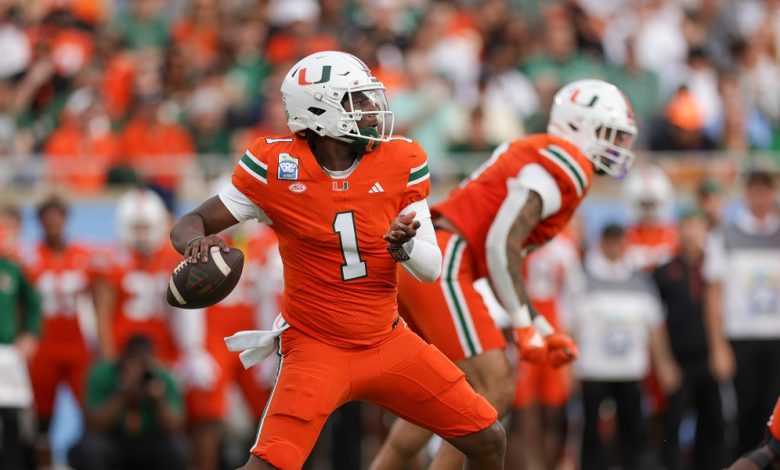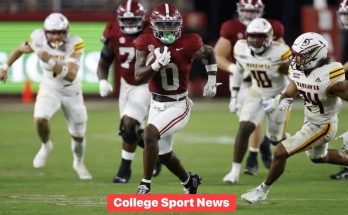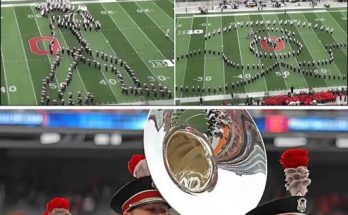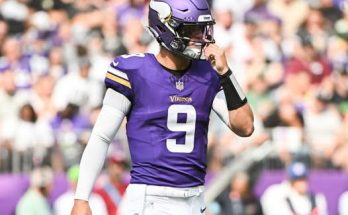Unclear: Mock Drafts and Forecasting Tactics in the NFL Draft with Focus on Key Players like Offensive Line and Quarterback
The NFL Draft is an exhilarating spectacle that captivates the sports world every year, as teams make crucial decisions about their future. For some teams, the draft serves as a way to fill immediate gaps in their roster, while for others, it’s about long-term planning, developing new talent, and making strategic moves to elevate the team. While the first overall pick usually garners the most attention, there are a host of other players and positions that could dramatically impact a franchise’s fortunes.
In this article, we will explore the uncertain and dynamic nature of NFL draft predictions, particularly focusing on key positions like quarterback (QB) and offensive line (OL). We will provide mock drafts that reflect distinct team-building strategies and examine how some of the top players in these positions may influence decisions. The mock drafts will consider both obvious and less conventional tactics, offering a comprehensive view of what could unfold in the upcoming draft.
The Uncertainty of the NFL Draft
The NFL Draft is often characterized by its unpredictability. While top prospects like quarterbacks and pass rushers are typically viewed as premium picks, draft boards can fluctuate drastically as teams change their needs or adjust to shifting trends. Trade rumors, player evaluations, and team philosophies all play into how these drafts unfold. An ideal draft is one that not only strengthens a team’s current needs but also provides a strategic foundation for sustained success.
In the case of quarterbacks and offensive line players, the stakes are even higher. The right QB could be the difference between a team languishing in mediocrity and one that ascends to playoff contention. Meanwhile, a top-tier offensive line player could transform a team’s running game and provide a young QB with the protection they need to succeed.
The Quarterback Debate: A Franchise-Altering Decision
Quarterback is the most important position in football, and it often defines a franchise’s future. Over the years, NFL teams have learned that having a franchise quarterback can elevate a team into perennial contenders, while failing to address the position can lead to years of instability and frustration.
Mock Draft 1: The “Quarterback Hungry” Strategy
In this scenario, the first two picks are quarterbacks, with both teams desperately in need of a solution at the position. Here’s how the mock unfolds:
1st Overall Pick – Arizona Cardinals (Trade Down):
The Arizona Cardinals, after trading down with the Indianapolis Colts, secure a bounty of picks. They opt to trade out of the top spot to fill multiple needs and set themselves up for the future. The Colts, however, are desperate to find their next franchise QB and move up to the first overall position.
1st Overall Pick (Indianapolis Colts) – QB Caleb Williams, USC
Caleb Williams is the consensus top QB prospect in this draft, and many experts believe he is a generational talent. With his ability to make every throw in the book, paired with remarkable mobility and a calm demeanor under pressure, Williams represents the Colts’ long-awaited hope at the quarterback position. His decision-making and leadership skills could be the foundation upon which Indianapolis builds its next successful era.
2nd Overall Pick – Houston Texans (Bryce Young, Alabama)
The Texans, after being an early candidate for the QB hunt, take Bryce Young, the star quarterback from Alabama. Young’s college career has been nothing short of impressive, and his skills are comparable to some of the best quarterbacks in recent history. Despite concerns over his size, Young’s football IQ, arm strength, and ability to extend plays with his legs make him a standout option for Houston.
Key Analysis:
In this mock, teams recognize the importance of addressing the quarterback position early. The Colts move up to ensure they get the top QB available, while the Texans follow suit. Both teams now have their long-term solutions in place. However, the ripple effect of these picks will influence other teams’ strategies as they reconsider their own QB situations or choose to reinforce their rosters elsewhere.
Mock Draft 2: The “Best Available” Strategy
This approach considers a broader draft philosophy, focusing on selecting the best talent on the board, regardless of position, to build a competitive roster.
1st Overall Pick – Chicago Bears – QB Drake Maye, UNC
The Chicago Bears, while still invested in Justin Fields as their starting QB, use the first pick in the draft to secure a future asset in Drake Maye. With an incredible arm, poise, and impressive leadership abilities, Maye could sit behind Fields and learn for a year before taking over as the starter in a season or two. This would give Chicago leverage and insurance at the most important position on the field.
2nd Overall Pick – Houston Texans – OT Joe Alt, Notre Dame
Rather than selecting a QB, the Texans decide to invest in the future of their offensive line. Alt is a dominant force at left tackle and would immediately solidify Houston’s protection for any future QB. Protecting the pocket and providing the quarterback with sufficient time to make plays is often the first step in building a long-term successful offense.
Key Analysis:
This mock takes an unconventional approach by prioritizing offensive line over quarterback. It suggests that the Texans may opt to build a wall of protection first, while the Bears invest in the future of the QB position. If the Texans don’t feel they need a new QB immediately, they can use this draft to bolster their offensive line and allow their current QB (perhaps Davis Mills) to develop.
The Offensive Line: The Unseen Powerhouse
The offensive line is frequently overlooked in favor of flashier positions like quarterback or wide receiver. However, a strong offensive line can elevate an entire offense and ensure that both the quarterback and running backs can execute their roles effectively. With top-tier prospects available in the 2025 draft, several teams may choose to address the trenches early on.
Mock Draft 3: The “Protection First” Strategy
In this scenario, the draft is more about building a powerful offensive line and ensuring that the quarterback is set up for success:
1st Overall Pick – Carolina Panthers (Trade Down):
Carolina trades out of the first spot to a team in need of a quarterback. In return, the Panthers gain an additional first-round pick and additional capital in future drafts.
1st Overall Pick (Trade Up – Washington Commanders) – OT Olu Fashanu, Penn State
The Washington Commanders, who have struggled with their offensive line for years, decide to make a bold move by trading up to secure Olu Fashanu, a left tackle with incredible power, technique, and mobility. Fashanu’s ability to protect the quarterback’s blindside is highly valued, and Washington believes this is the key to unlocking their offensive potential. With solid protection, the team hopes to see improved production from their quarterbacks and running backs.
2nd Overall Pick – Detroit Lions – OG J.C. Latham, Alabama
The Detroit Lions, with a strong foundation in place, focus on bolstering their interior line by selecting J.C. Latham. Latham’s road-grading abilities in the run game will complement their already-impressive running back group and allow them to control the line of scrimmage. Detroit’s decision to bolster the offensive line reflects a growing trend in the league: powerful offensive lines are the backbone of successful offenses.
Key Analysis:
This mock highlights a growing emphasis on building a team’s strength from the trenches outward. While quarterbacks are vital, teams like Washington and Detroit are making significant investments in their offensive lines, aware that stability and protection in the pocket will determine how successful their teams can be over time.
The Bottom Line: Predicting Uncertainty
The uncertainty surrounding NFL draft predictions lies not only in which players will be selected but also in how teams will prioritize their needs. Although quarterbacks will always receive the lion’s share of attention, teams increasingly recognize the importance of other positions, especially offensive line. Whether a team is in need of a franchise quarterback or wants to build a wall in the trenches, their strategy will significantly impact the draft’s outcome.
In mock drafts, we’ve seen different teams adopt vastly different approaches, from the quarterback-hungry strategy of selecting a high-potential signal-caller to the more unconventional strategy of investing heavily in the offensive line to build a successful foundation. The fluidity of team needs, coupled with the strategic moves available via trades, makes predicting the draft outcome a near-impossible task.
Ultimately, as teams navigate the uncertainty of the draft, the decision-making process becomes less about following a template and more about tailoring a strategy that reflects each franchise’s vision for the future. Whether it’s a quarterback like Caleb Williams or a dynamic offensive lineman like Olu Fashanu, each selection holds the potential to shift the landscape of the league, leaving the draft open to surprises, excitement, and hope for the future.
As the NFL Draft approaches, one thing is certain: the road to the Super Bowl begins with these pivotal selections, and the impact of these picks will be felt for years to come.



